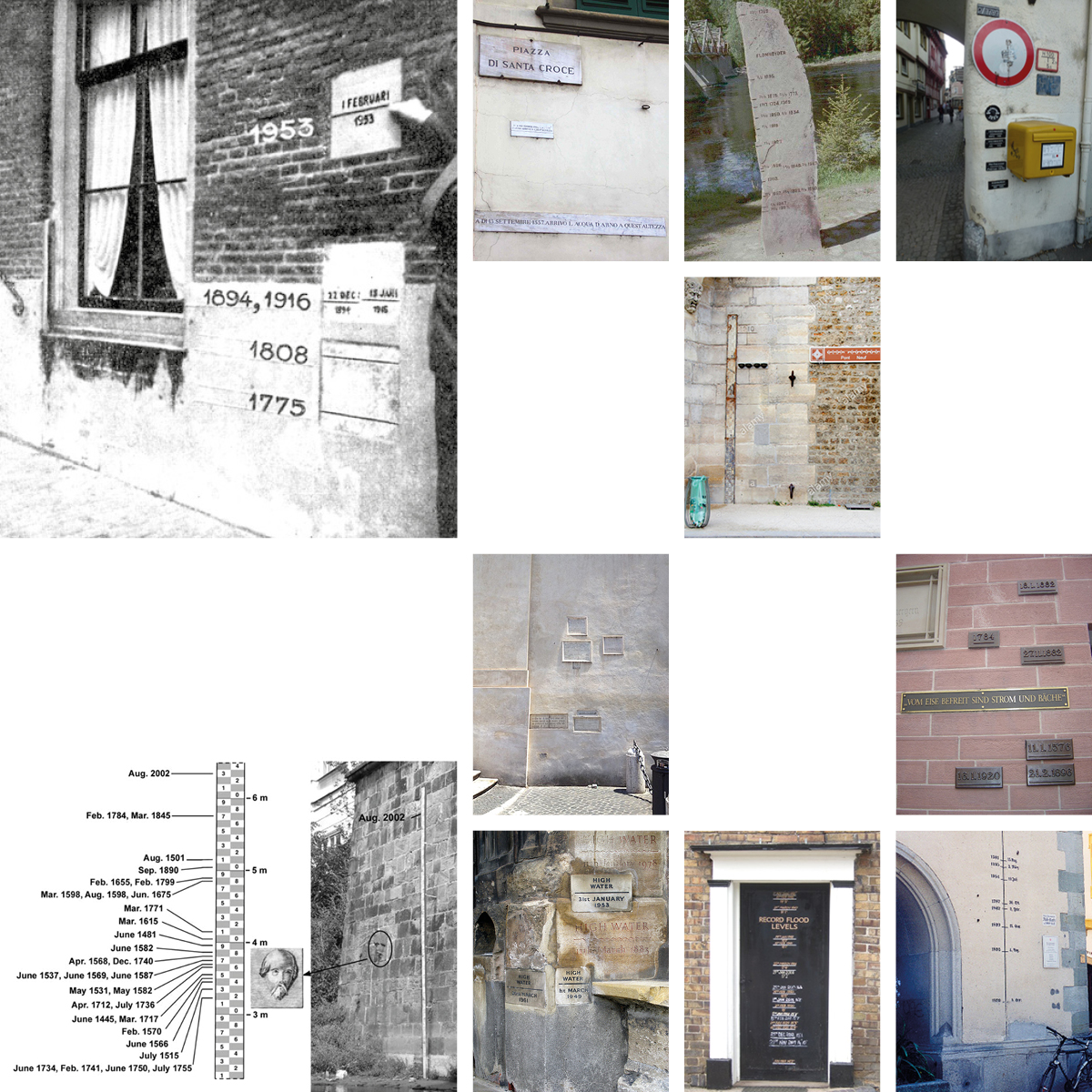
“During the weekend of Saturday, January 31, 1953, hurricane force winds over the North Sea generated a tremendous storm surge that flooded the low-lying coastal regions of the Netherlands, Belgium, and the United Kingdom. The peak high waters hit the coast in the early morning hours, surprising many people in their sleep. In the Netherlands, a country where 75 percent of the land lies either below or less than 3 percent above sea level, nearly 2000 people lost their lives.”1
“In August 2002 a flood caused by over a week of continuous heavy rains ravaged Europe, killing dozens, dispossessing thousands, and causing damage of billions of euros in the Czech Republic, Austria, Germany, Slovakia, Poland, Hungary, Romania and Croatia, as well as in Russia.”2
From the Dutch flood of 1953, to the Great Flood of Paris in 1910 and beyond the European floods of 2002, lies an index of indexes regarding the idea of historical floods, their impact and aftermath. European leaders have gathered to create a better understanding of how to prevent such disasters in the future several times. It took until the 20th century before Romans could deploy both the resources and technology to finally tame the powerful Tiber.3
However, since 1953 the Dutch have taken a zero-tolerance attitude towards flooding. Only 20 days after the flood, officials appointed the Delta Works committee that, in turn, formulated the “Deltaplan” we all know today. The plan entailed blocking the estuary mouths of the big rivers, building dams and storm surge barriers, installing sluices and locks, and heightening and strengthening dikes. Traces of flood devastation remain in the form of flood markers.
The Dutch boy who saves his country by plugging a dyke with his finger4 may be an international legend; for the Dutch, however, the hero is the polder model: expertise and technological advancement. Sharing their knowledge on water management with the world since 1614, when Adrian Boot, hydraulic engineer, was invited to assist Mexico City to drain the lakes in order to prevent flooding. The Dutch expert rejected the idea of drainage, preserved the lakes and proposed regulation instead, reimagining the Dutch hydraulic technology to suit the environmental and social character of the island of Mexico City.5
← Back to Lexicon
“In August 2002 a flood caused by over a week of continuous heavy rains ravaged Europe, killing dozens, dispossessing thousands, and causing damage of billions of euros in the Czech Republic, Austria, Germany, Slovakia, Poland, Hungary, Romania and Croatia, as well as in Russia.”2
From the Dutch flood of 1953, to the Great Flood of Paris in 1910 and beyond the European floods of 2002, lies an index of indexes regarding the idea of historical floods, their impact and aftermath. European leaders have gathered to create a better understanding of how to prevent such disasters in the future several times. It took until the 20th century before Romans could deploy both the resources and technology to finally tame the powerful Tiber.3
However, since 1953 the Dutch have taken a zero-tolerance attitude towards flooding. Only 20 days after the flood, officials appointed the Delta Works committee that, in turn, formulated the “Deltaplan” we all know today. The plan entailed blocking the estuary mouths of the big rivers, building dams and storm surge barriers, installing sluices and locks, and heightening and strengthening dikes. Traces of flood devastation remain in the form of flood markers.
The Dutch boy who saves his country by plugging a dyke with his finger4 may be an international legend; for the Dutch, however, the hero is the polder model: expertise and technological advancement. Sharing their knowledge on water management with the world since 1614, when Adrian Boot, hydraulic engineer, was invited to assist Mexico City to drain the lakes in order to prevent flooding. The Dutch expert rejected the idea of drainage, preserved the lakes and proposed regulation instead, reimagining the Dutch hydraulic technology to suit the environmental and social character of the island of Mexico City.5
← Back to Lexicon
Index of flood markers around Europe.
- https://hazards.colorado.edu/article/the-1953-north-sea-flood-in-the-netherlands-impact-and-aftermath
- https://en.wikipedia.org/wiki/2002_European_floods
-
https://apps.carleton.edu/medievalrome/tiber/?story_id=1299594
-
https://www.ft.com/content/44c2d2ee-422c-11ea-bdb5-169ba7be433d
-
"In the Art of My Profession": Adrian Boot and Dutch Water Management in Colonial Mexico City https://www.jstor.org/stable/24394833?seq=1
